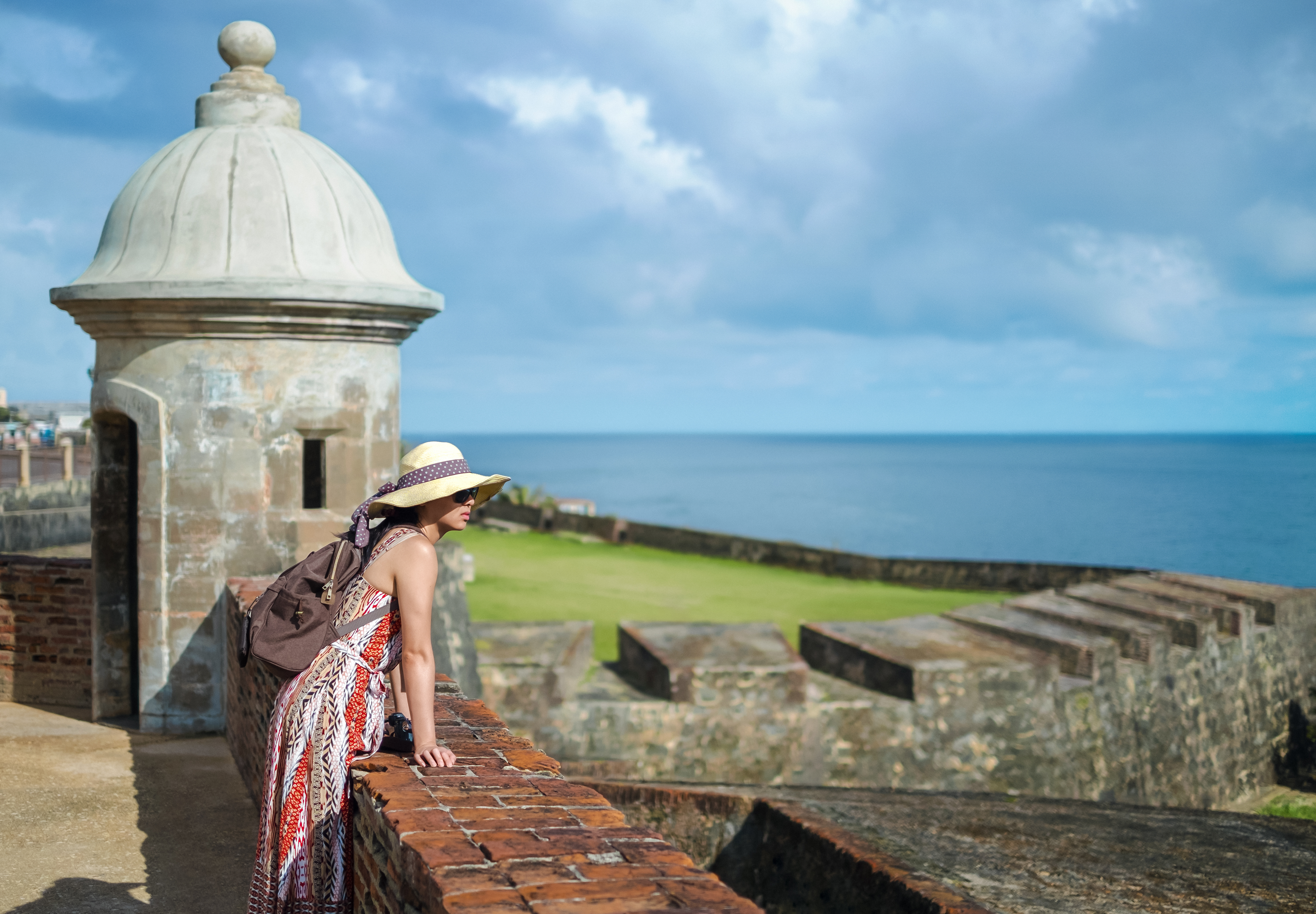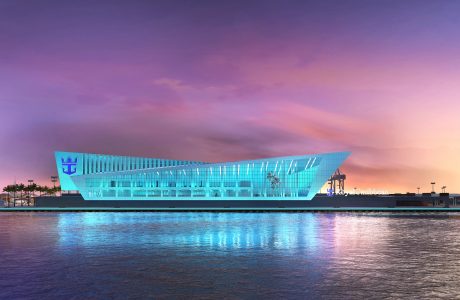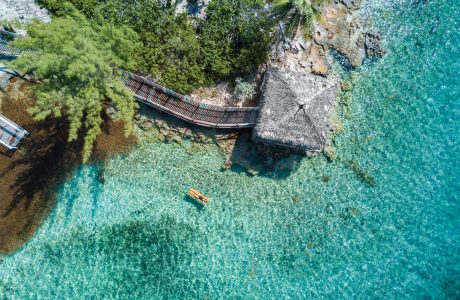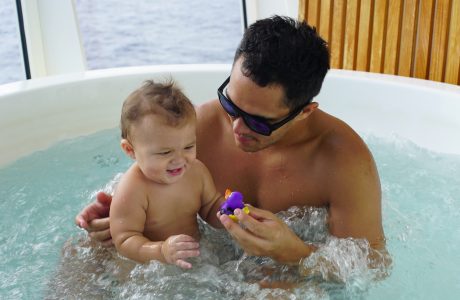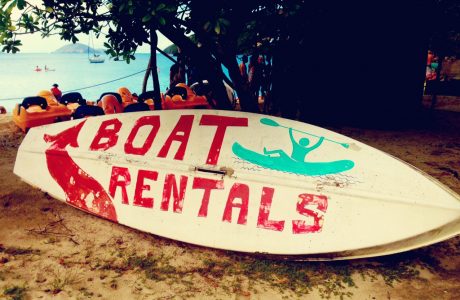When discussing the Caribbean’s history, you can hardly overlook the tales of legendary pirates popularized through movies and many books like “Treasure Island.” And with good reason—from about 1650 to 1726, pirates roamed the seas, plundered ships, targeted Spanish settlements, amassed riches and even founded a pirate “republic.”
But while Hollywood films often portray pirates as “robbers,” the reality was more complicated, namely because of “privateers.” These plunderers practiced “legal” piracy with the blessing of a sovereign nation (like France, England or Holland), often stealing goods from the ships and settlements of a rival country. They became known as pirates once their work for the sponsoring nation ended. No matter the label, these bandits greatly shaped Caribbean history.
Ready to learn more about the real-life pirates of the Caribbean? Here are five islands where the legendary marauders made a major impact:
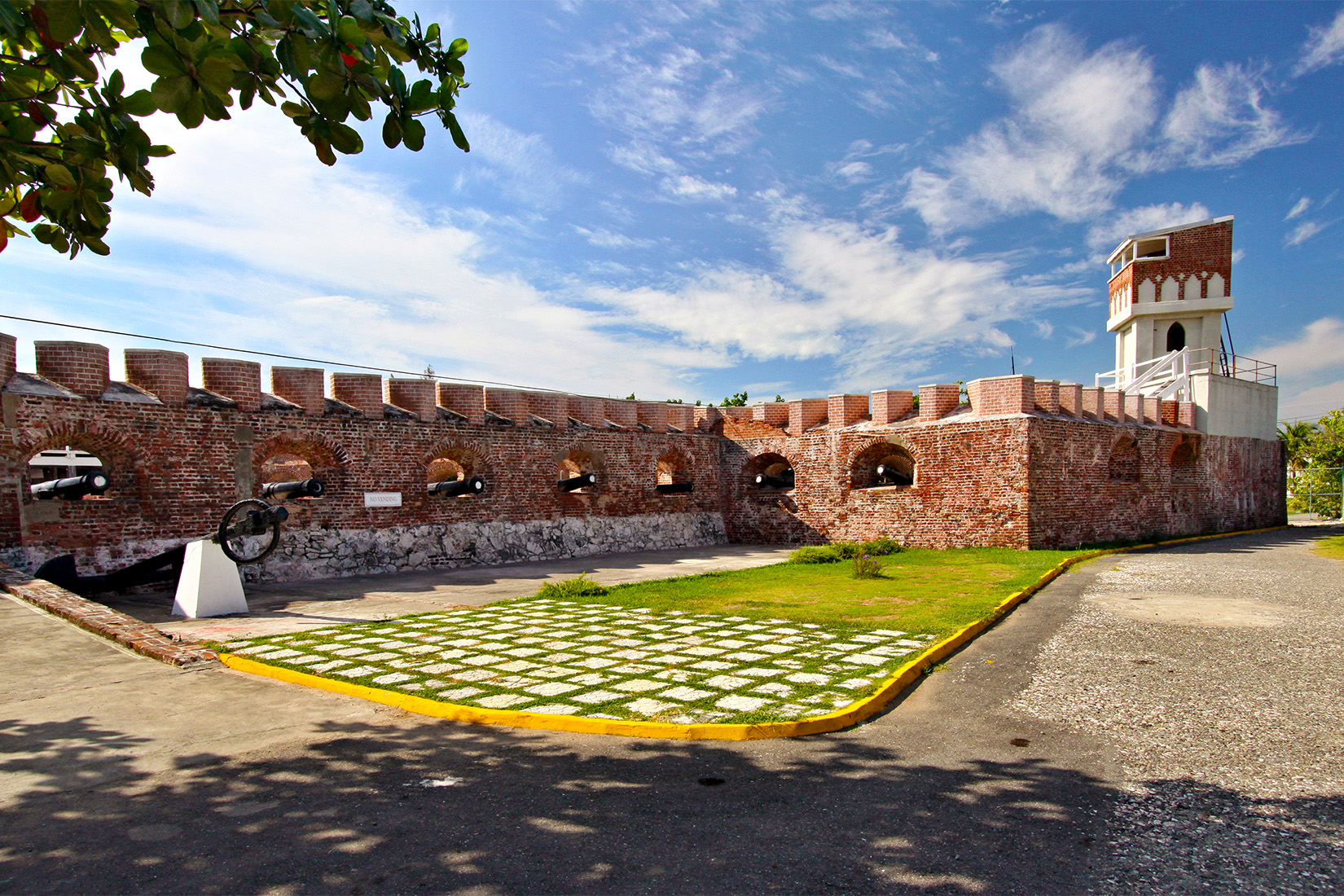
Once considered Jamaica’s “wickedest city,” Port Royal was a hub of pirate activity.
Credit: Shutterstock
Where else to start but Jamaica? The Spanish founded Port Royal—also known as Jamaica’s “wickedest city”—in 1494. It grew to become the largest Caribbean city as well as home to English and Dutch privateers who would turn to piracy and raid Spanish treasure ships.
During its heyday, the large Port Royal harbor attracted pirates from around the world to sell their stolen goods. Its proximity to trade routes and Spanish settlements made raids easier to carry out.
As the British colonized Jamaica, they needed help to fend off the Spanish and French. This led to a defense deal with Port Royal’s former privateers, and in return, a pirate “utopia.” Think Las Vegas with fewer laws—streets flowed with rum, gold, and wild days and nights. However, an earthquake and ensuing tsunami sank two thirds of Port Royal in 1692, and nearby Kingston then became the most important Jamaican city.

Tortuga was a pirate stronghold attracting the likes of Sir Henry Morgan, namesake for the popular rum brand.
Credit: Royal Caribbean
Off the northern coast—not far from Labadee, Royal Caribbean’s private destination—lies the Haitian island of Tortuga. Though small, it was the most popular pirate haven for all of Hispaniola (present-day Haiti and the Dominican Republic.) A band of French raiders fled mainland Hispaniola around 1630 when Spanish settlers moved in, landing at Tortuga and fortifying their new pirate stronghold with Fort de Rocher, which was armed with as many as 24 cannons.
Future buccaneers, as Tortuga pirates were called, came from Holland, Portugal and even Africa. They formed a collective, “the Brethren of the Coast,” with their own code of conduct, and constantly targeted Spanish settlements and ships. The Welsh privateer Sir Henry Morgan, the namesake for the popular rum brand, was one of the most famous members and led a successful assault on Panama City, Panama in 1671.
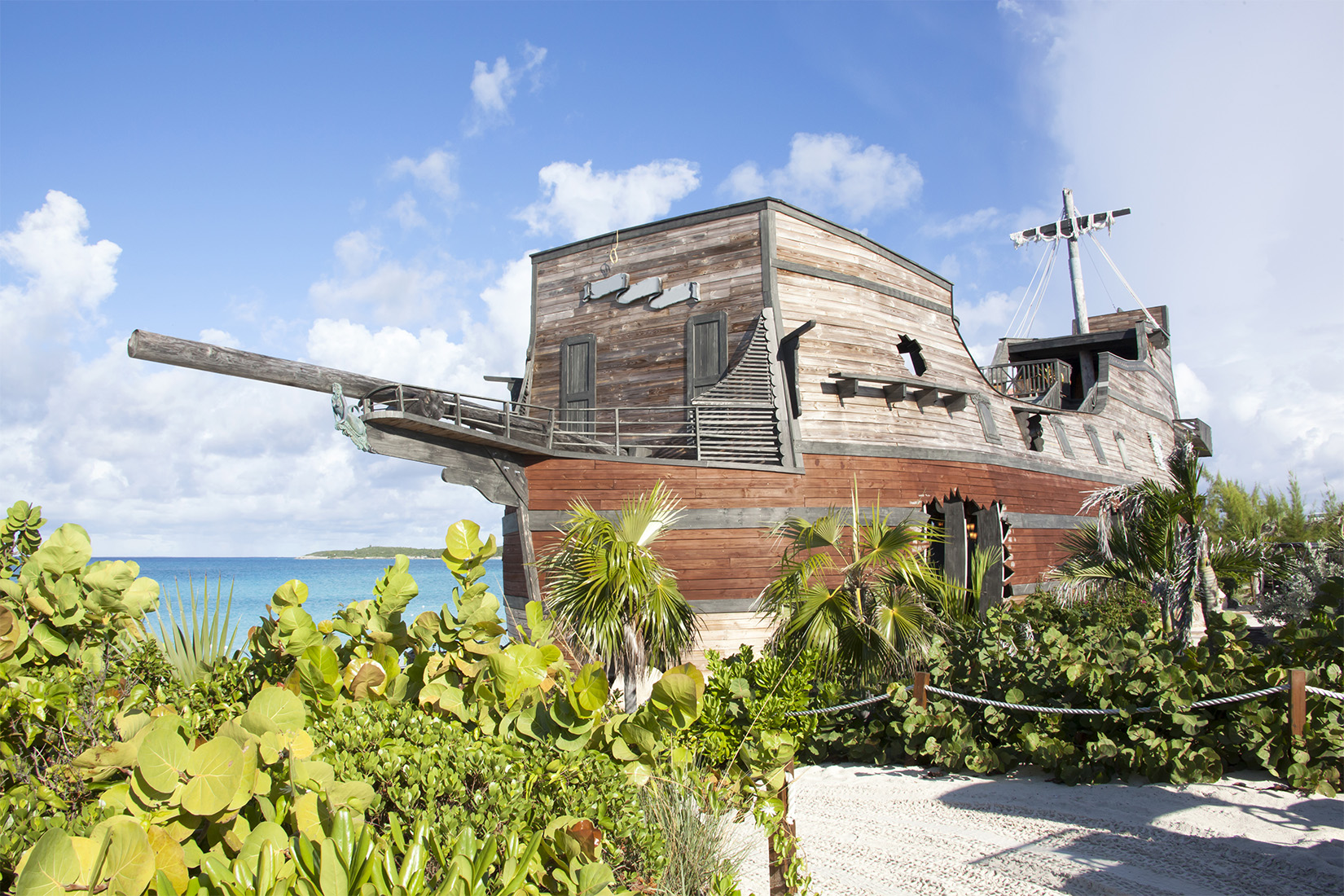
For over a decade Nassau served as a pirate republic.
Credit: Shutterstock
Today, Nassau, Bahamas is a paradise for beach bums and adventure seekers, but but for over a decade it was known as the pirate republic. Originally governed by the British, a privateer from England named Henry Every bribed the governor with plundered loot to establish a safe haven for contraband goods in 1696. After Spanish and French fleets attacked the island twice in the early 18th century, residents fled and privateers took over.
After the end of privateering, the newly unemployed continued their raiding. The pirates voted Edward Teach aka “Blackbeard” as Nassau’s magistrate in the early 1700s. Another pirate, John Watling, had a checkered piracy legacy after being shot in an unsuccessful retreat. He is remembered by the Bahamian rum distillery bearing his name, which adventurist Shay Mitchell got to experience firsthand.

Pirates considered rum a treasure in itself.
Credit: Shutterstock
Though farther east and off the beaten path, Barbados was frequented by multiple famous pirates, like native-born “gentleman” Stede Bonnet, who collaborated with Blackbeard on plundering. One of the most ingenious though was Sam Lord; it’s said he hung lanterns on trees and animals to lure merchant ships into this supposed “port.” It was really a reef, and once the ships got stuck, Lord’s crew had their pickings!
As pirates were never too far from a bottle of rum, it’s no coincidence that Barbados is also home to the oldest commercial rum distillery, Mount Gay, which dates back to 1703. Taking a tour is another way to get a (delicious!) taste of Caribbean history.
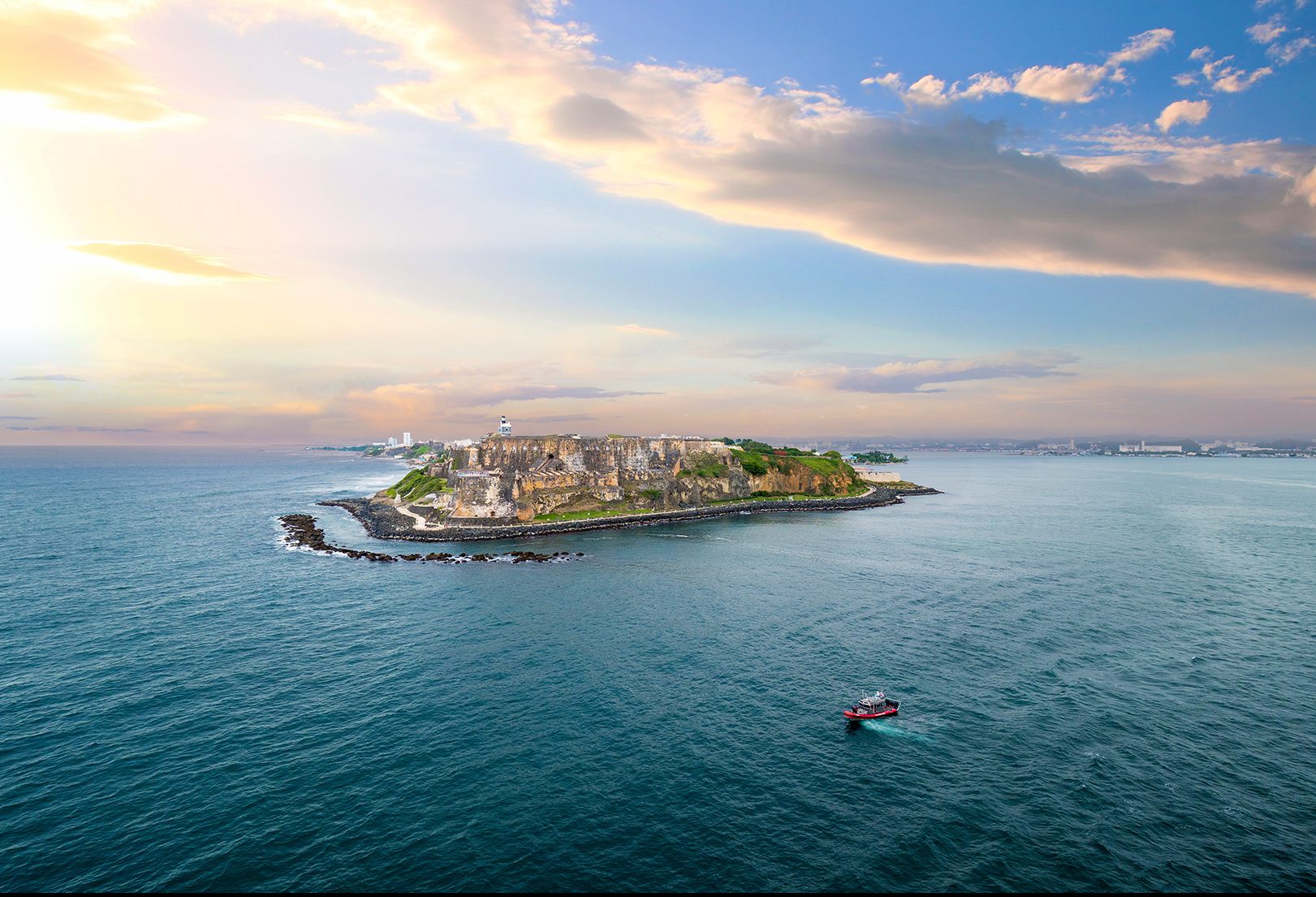
The pirate Roberto “El Pirata” Cofresí was captured and imprisoned in San Juan’s Castillo San Felipe del Morro.
Credit: Royal Caribbean
Another famous rum-producing Caribbean island, Puerto Rico has its own infamous pirate—Roberto “El Pirata” Cofresí. After work as a sailor earned him only a modest salary, he turned pirate and made use of his extensive geographical knowledge.
Cofresí commanded small, maneuverable, and above all, fast sloops with just six guns able to outrun pursuers. It worked—at his peak, he was evading capture from six different nations and even targeted the U.S. Navy’s antipiracy squadron. However, he was eventually captured and imprisoned in San Juan at Castillo San Felipe del Morro, a favorite fort for photographers visiting Puerto Rico today.
Because of his constant aggression toward Spain, the Puerto Rican independence movement adopted Roberto posthumously. He became a hero in Puerto Rico’s rich history.
Want to trace the incredible pirate tales of the Caribbean yourself? Head here to see how Royal Caribbean can take you to these islands.
